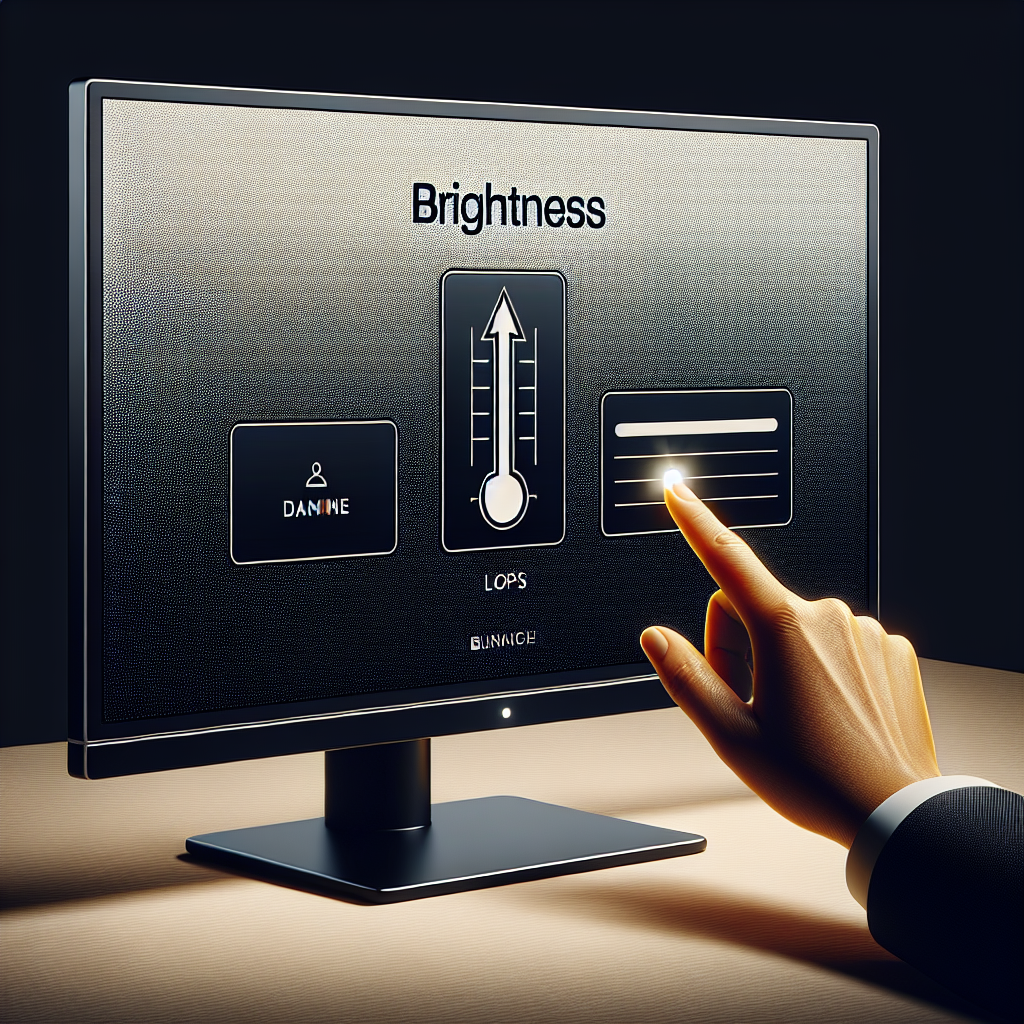Understanding LCD Monitor Brightness
Brightness adjustment on LCD monitors is essential for ensuring optimal visual comfort and reducing eye strain. Using default settings may not always be suitable for all lighting conditions, making manual adjustments necessary. This article will guide you through the steps to adjust the brightness on an LCD monitor, providing tips and recommendations to achieve the best display settings.
Methods to Adjust Brightness on an LCD Monitor
| Method | Description |
|---|---|
| Using Monitor Buttons | Adjust brightness using physical buttons on the monitor itself. |
| Using On-Screen Display (OSD) Menu | Navigate the monitor’s OSD menu to change brightness settings. |
| Adjusting via Software | Use software or operating system settings to control brightness. |
| Automatic Brightness Adjustment | Utilize features like sensors for auto-brightness adjustment. |
Using Monitor Buttons
Most monitors come with dedicated buttons that allow you to adjust various settings, including brightness. These buttons are usually found on the front, side, or bottom bezel of the monitor. Here are the general steps:
- Locate the brightness adjustment buttons.
- Press the appropriate button to increase or decrease brightness.
- Continue adjusting until the desired brightness level is achieved.
This method is straightforward and often preferred for quick adjustments without navigating complex menus.
Using On-Screen Display (OSD) Menu
The On-Screen Display (OSD) menu offers a more comprehensive way to adjust brightness and other display settings. Here are the general steps to access it:
- Press the OSD menu button on your monitor.
- Navigate through the menu using the arrow buttons.
- Select the brightness option.
- Adjust the brightness using the arrow buttons.
- Save the changes and exit the menu.
The OSD menu provides more precise control and access to other settings such as contrast, color temperature, and more.
Adjusting via Software
Brightness can also be adjusted through your operating system or third-party software. Here are some common methods:
Windows OS
- Click on the Start menu and go to Settings.
- Select System and then go to Display.
- Move the brightness slider to adjust the brightness.
Mac OS
- Click on the Apple menu and go to System Preferences.
- Select Displays.
- Adjust the brightness slider.
Third-Party Software
- Many third-party applications are available for brightness control, providing additional features like scheduling and profiles.
Each method has its advantages, and you can choose based on your specific needs and convenience.
Automatic Brightness Adjustment
Some LCD monitors and laptops come with built-in sensors that automatically adjust the brightness based on ambient lighting conditions. Here’s how to enable it:
- Check if your monitor supports automatic brightness adjustment.
- Enable the feature through the OSD menu or software settings.
- Calibrate the sensor if necessary for optimal performance.
This feature is particularly useful for maintaining optimal brightness levels throughout the day without manual adjustments.
Tips for Optimal Brightness Settings
Here are some tips to ensure your monitor brightness is set optimally:
- Match Ambient Lighting: Adjust brightness based on the lighting conditions of your environment. Brighter rooms may require higher brightness settings.
- Avoid Eye Strain: Lower brightness in dimly lit rooms to reduce eye strain and headaches.
- Energy Savings: Lower brightness settings can help save energy and extend the lifespan of your monitor.
- Regular Adjustments: Periodically adjust brightness as your environment or tasks change.
Adjusting the brightness on an LCD monitor is a simple yet essential task to ensure a comfortable and productive viewing experience. Whether using monitor buttons, the OSD menu, software, or automatic features, you can achieve optimal brightness settings that suit your needs.

